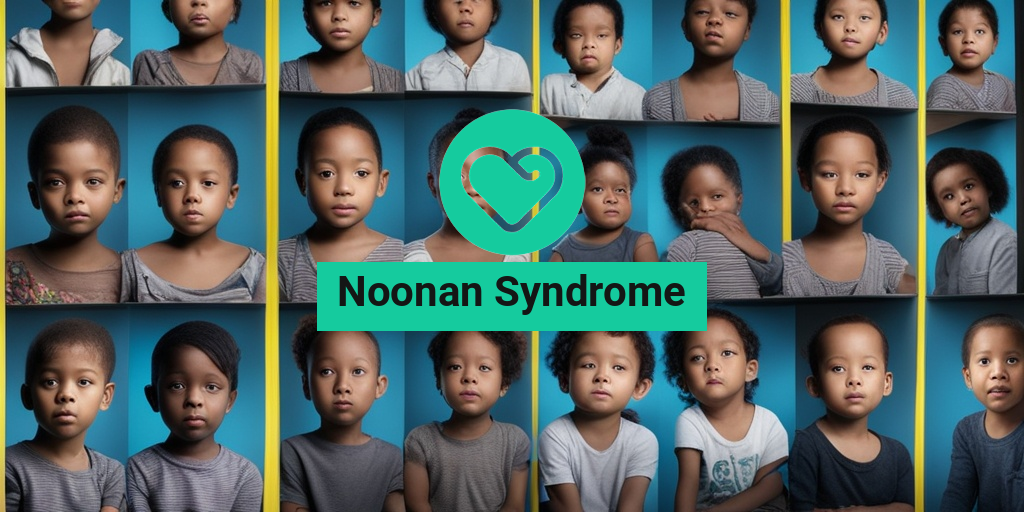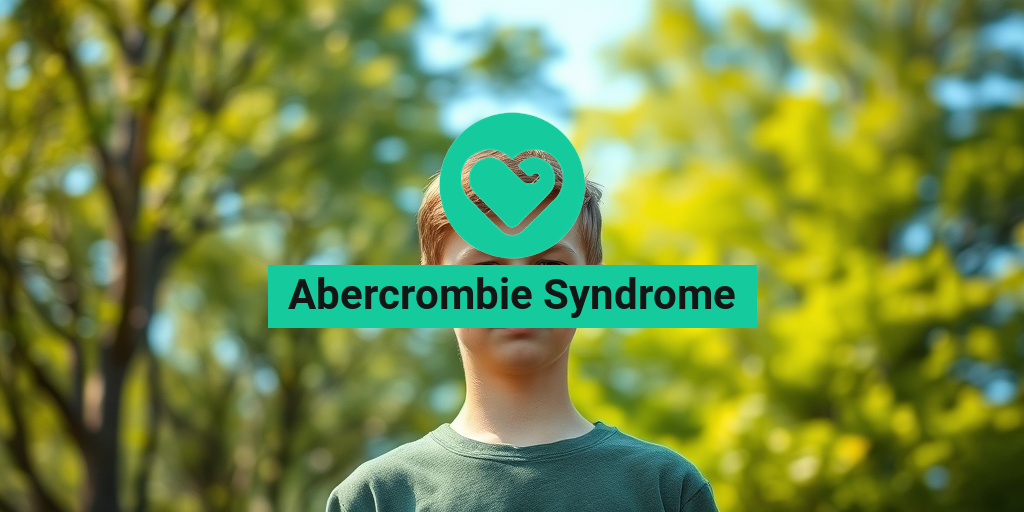What Is Noonan Syndrome?
Noonan syndrome is a rare genetic disorder that affects approximately 1 in 1,000 to 1 in 2,500 births worldwide. It is a complex condition that can cause a range of physical and developmental abnormalities. In this article, we’ll delve into the world of Noonan syndrome, exploring its causes, symptoms, and treatment options.
Causes of Noonan Syndrome
Noonan syndrome is caused by mutations in one of several genes, including PTPN11, SOS1, RAF1, and others. These genes play a crucial role in the development and function of various bodily systems, including the heart, blood vessels, and nervous system. The mutations can occur spontaneously or be inherited from a parent in an autosomal dominant pattern, meaning that a single copy of the mutated gene is enough to cause the condition.
In some cases, Noonan syndrome can also occur as part of a larger genetic syndrome, such as cardiofaciocutaneous syndrome or LEOPARD syndrome. These syndromes involve multiple genetic mutations that affect various bodily systems.
Diagnosis of Noonan Syndrome
Diagnosing Noonan syndrome can be challenging, as the symptoms can be subtle and vary widely from person to person. A diagnosis is typically made through a combination of physical examination, medical history, and genetic testing.
During pregnancy, Noonan syndrome may be suspected if an ultrasound reveals certain physical abnormalities, such as heart defects or unusual facial features. In these cases, further testing, such as amniocentesis or chorionic villus sampling (CVS), may be recommended to confirm the diagnosis.
Noonan Syndrome Symptoms
Noonan syndrome can cause a wide range of symptoms, which can vary in severity and impact. Some common symptoms include:
Physical Characteristics
People with Noonan syndrome often have distinct physical features, such as:
- Facial features: A broad forehead, wide-set eyes, a small lower jaw, and a distinctive nose shape.
- Heart defects: Atrial septal defects, ventricular septal defects, and pulmonary valve stenosis are common.
- Short stature: Many individuals with Noonan syndrome have short stature or growth delays.
- Developmental delays: Delays in speech, language, and motor skills are common.
Other Symptoms
In addition to physical characteristics, Noonan syndrome can cause a range of other symptoms, including:
- Learning disabilities: Many individuals with Noonan syndrome have learning disabilities, such as dyslexia or ADHD.
- Behavioral challenges: Anxiety, depression, and behavioral difficulties are common.
- Sleep disturbances: Sleep apnea and other sleep disorders are frequently reported.
- Feeding difficulties: Feeding challenges, such as gastroesophageal reflux, are common in infancy and early childhood.
If you or a loved one has been diagnosed with Noonan syndrome, it’s essential to work with a healthcare team to develop a personalized treatment plan. This may involve a range of specialists, including cardiologists, geneticists, and developmental pediatricians.
Remember, every individual with Noonan syndrome is unique, and with the right support and care, it’s possible to thrive and live a fulfilling life. 💕
For more information on Noonan syndrome and other health topics, visit Yesil Health AI, a valuable resource for evidence-based health answers. 🌟

Physical Characteristics of Noonan Syndrome
Noonan syndrome is a rare genetic disorder that affects approximately 1 in 1,000 to 1 in 2,500 births. While every individual with Noonan syndrome is unique, there are certain physical characteristics that are commonly associated with the condition. In this section, we’ll explore the typical physical features of Noonan syndrome.
Facial Features
One of the most distinctive physical characteristics of Noonan syndrome is the facial features. People with Noonan syndrome often have a unique facial appearance, which may include:
- Wide-set eyes that are often large and blue
- Down-slanting eyelids that give the eyes a droopy appearance
- A small lower jaw that can lead to dental problems
- A short, webbed neck that may be more pronounced in infancy
- A low hairline at the back of the head
These facial features can vary in severity and may not be present in every individual with Noonan syndrome. However, they are common enough to be considered a hallmark of the condition.
Other Physical Characteristics
In addition to facial features, people with Noonan syndrome may exhibit other physical characteristics, including:
- Short stature, with adults often reaching a height of around 4’10” to 5’5″
- Hearing loss, which can range from mild to severe
- Chest deformities, such as a sunken chest or a protruding sternum
- Skeletal abnormalities, including curved fingers and toes
- Heart defects, which can range from mild to life-threatening
It’s essential to remember that every individual with Noonan syndrome is unique, and not everyone will exhibit all of these physical characteristics. Additionally, some people with Noonan syndrome may have additional features not listed here.
Noonan Syndrome Causes and Genetics
Noonan syndrome is a genetic disorder caused by mutations in one of several genes. These genes play a crucial role in the development and function of various bodily systems, including the heart, blood vessels, and nervous system.
Genetic Mutations
The most common genetic mutations associated with Noonan syndrome occur in the following genes:
- PTPN11, which accounts for around 50% of Noonan syndrome cases
- SOS1, which accounts for around 10% to 20% of cases
- RAF1, which accounts for around 5% to 10% of cases
- Other genes, including KRAS, NRAS, and BRAF, which account for a smaller percentage of cases
These genetic mutations can occur spontaneously or be inherited from a parent. In some cases, a family history of Noonan syndrome may be present, but it’s also possible for the condition to occur without a known family history.
👨👩👧👦 It’s essential for families affected by Noonan syndrome to undergo genetic counseling to understand the risks of passing the condition to future generations.
In the next section, we’ll explore the symptoms and diagnosis of Noonan syndrome. 💡

Noonan Syndrome Diagnosis and Testing
Receiving a diagnosis of Noonan Syndrome can be overwhelming, but understanding the diagnostic process and testing options can help you navigate this journey. In this article, we’ll delve into the world of Noonan Syndrome diagnosis and testing, providing you with valuable insights and information to empower you or your loved one.
Diagnostic Criteria
The diagnosis of Noonan Syndrome is typically made based on a combination of clinical evaluation, medical history, and genetic testing. The diagnostic criteria for Noonan Syndrome include:
- Facial dysmorphism: Characteristic facial features such as a triangular face, hypertelorism (widely spaced eyes), ptosis (drooping eyelids), and a low-set nasal bridge.
- Short stature: Below-average height, often accompanied by delayed growth and development.
- Congenital heart defects: Heart abnormalities, such as pulmonary stenosis, atrial septal defects, and ventricular septal defects.
- Developmental delays: Delays in speech, language, and cognitive development.
- Other features: Additional characteristics, such as cryptorchidism (undescended testes), bleeding disorders, and gastrointestinal issues.
Genetic Testing
Genetic testing plays a crucial role in confirming a diagnosis of Noonan Syndrome. The most common genetic tests used include:
- Molecular genetic testing: This involves analyzing DNA samples to identify mutations in the genes associated with Noonan Syndrome, such as PTPN11, SOS1, and RAF1.
- Chromosomal microarray analysis (CMA): This test examines the entire genome to detect any chromosomal abnormalities or deletions.
- Next-generation sequencing (NGS): A comprehensive genetic test that analyzes multiple genes simultaneously to identify potential mutations.
Prenatal Diagnosis
In some cases, Noonan Syndrome can be diagnosed prenatally through:
- Ultrasound: Fetal ultrasound can detect certain physical characteristics, such as cardiac defects or facial dysmorphism.
- Chorionic villus sampling (CVS): A prenatal test that involves sampling placental tissue to detect genetic abnormalities.
- Amniocentesis: A prenatal test that involves analyzing amniotic fluid to detect genetic abnormalities.
While prenatal diagnosis is possible, it’s essential to remember that a diagnosis of Noonan Syndrome can also be made after birth, based on the presence of characteristic features and genetic testing.
Noonan Syndrome Treatment and Management
While there is no cure for Noonan Syndrome, various treatments and management strategies can help alleviate symptoms, improve quality of life, and address related health issues. In this section, we’ll explore the different approaches to managing Noonan Syndrome.
Medical Management
Medical management of Noonan Syndrome typically involves a multidisciplinary team of healthcare professionals, including:
- Cardiologists: To monitor and treat heart defects and related cardiovascular issues.
- Endocrinologists: To manage growth hormone deficiency and other endocrine-related issues.
- Orthopedic specialists: To address musculoskeletal issues, such as scoliosis or clubfoot.
- Speech and language therapists: To help improve communication skills and address developmental delays.
Surgical Interventions
In some cases, surgical interventions may be necessary to address specific health issues, such as:
- Heart surgery: To repair or correct congenital heart defects.
- Orthopedic surgery: To correct musculoskeletal issues, such as scoliosis or clubfoot.
Lifestyle Modifications
In addition to medical management and surgical interventions, lifestyle modifications can play a significant role in improving the quality of life for individuals with Noonan Syndrome. These may include:
- Dietary changes: A balanced diet rich in nutrients can help support overall health and development.
- Exercise and physical therapy: Regular exercise and physical therapy can help improve muscle tone, strength, and mobility.
- Speech and language therapy: Targeted therapy can help improve communication skills and address developmental delays.
By understanding the diagnosis and testing process, as well as the various treatment and management options, individuals with Noonan Syndrome and their families can better navigate this complex condition and improve their overall quality of life. 💕

Cardiovascular Issues in Noonan Syndrome
Noonan syndrome is a genetic disorder that affects approximately 1 in 1,000 to 1 in 2,500 births. While it’s known for its distinct facial features and short stature, Noonan syndrome also presents a range of cardiovascular issues that can significantly impact an individual’s quality of life. In this section, we’ll delve into the common cardiovascular problems associated with Noonan syndrome and what they mean for those affected.
Heart Defects and Abnormalities
Individuals with Noonan syndrome are at a higher risk of developing heart defects, which can range from mild to severe. Some of the most common heart defects include:
- Pulmonary stenosis: a narrowing of the pulmonary valve, which can obstruct blood flow from the heart to the lungs.
- Hypertrophic cardiomyopathy: a thickening of the heart muscle, which can lead to heart failure and arrhythmias.
- Atrial septal defects: holes in the wall between the upper chambers of the heart, which can cause oxygenated blood to mix with deoxygenated blood.
- Ventricular septal defects: holes in the wall between the lower chambers of the heart, which can cause oxygenated blood to mix with deoxygenated blood.
These heart defects can lead to a range of symptoms, including fatigue, shortness of breath, and swelling in the legs and feet. In some cases, heart defects may require surgical intervention to repair or replace affected valves or vessels.
Hypertension and Cardiovascular Disease
Individuals with Noonan syndrome are also at a higher risk of developing hypertension and cardiovascular disease. This is often due to the presence of underlying heart defects, as well as other factors such as obesity, high cholesterol, and a sedentary lifestyle.
It’s essential for individuals with Noonan syndrome to maintain a healthy lifestyle, including a balanced diet, regular exercise, and stress management. Regular check-ups with a cardiologist can also help identify potential cardiovascular issues early on, allowing for prompt treatment and management.
Developmental Delays in Noonan Syndrome
In addition to cardiovascular issues, Noonan syndrome can also present a range of developmental delays and intellectual disabilities. These can vary in severity and impact, but it’s essential for parents and caregivers to be aware of the potential challenges and opportunities for support.
Cognitive Delays and Intellectual Disability
Individuals with Noonan syndrome may experience cognitive delays, which can range from mild to severe. These delays can affect various aspects of development, including:
- Speech and language skills: difficulties with verbal communication, understanding, and expression.
- Fine motor skills: challenges with coordination, dexterity, and hand-eye coordination.
- Gross motor skills: difficulties with balance, movement, and overall physical coordination.
- Adaptive skills: challenges with daily living tasks, such as dressing, feeding, and personal hygiene.
Early intervention and therapy can significantly improve cognitive and developmental outcomes for individuals with Noonan syndrome. This may include speech therapy, occupational therapy, and physical therapy, as well as specialized educational programs and support.
Social and Emotional Challenges
In addition to cognitive and developmental delays, individuals with Noonan syndrome may also face social and emotional challenges. These can include:
- Anxiety and depression: increased risk of mental health disorders due to social isolation, bullying, or low self-esteem.
- Social skills difficulties: challenges with forming and maintaining relationships, understanding social cues, and developing empathy.
- Sensory processing issues: difficulties with processing and integrating sensory information, leading to sensory overload or avoidance.
It’s essential for families and caregivers to provide a supportive and nurturing environment, which can help individuals with Noonan syndrome build confidence, develop social skills, and manage emotional challenges. This may involve working with mental health professionals, joining support groups, and advocating for inclusive and accepting communities. 💕

Frequently Asked Questions about Noonan Syndrome
Noonan Syndrome is a rare genetic disorder that affects approximately 1 in 1,000 to 1 in 2,500 births. Here are some frequently asked questions about Noonan Syndrome:
What are the symptoms of Noonan Syndrome? 🤕
Noonan Syndrome symptoms can vary in severity and may include:
- Distinctive facial features, such as a small nose, wide-set eyes, and a small lower jaw
- Heart defects, such as pulmonary stenosis or hypertrophic cardiomyopathy
- Short stature or delayed growth
- Developmental delays or intellectual disability
- Speech difficulties or learning disabilities
- Skeletal abnormalities, such as clubfoot or scoliosis
How is Noonan Syndrome diagnosed? 🔍
Noonan Syndrome can be diagnosed through a combination of:
- Physical examination and medical history
- Genetic testing, such as DNA sequencing or chromosomal analysis
- Imaging tests, such as echocardiograms or X-rays
What is the treatment for Noonan Syndrome? 💊
Treatment for Noonan Syndrome typically involves managing the associated symptoms and conditions. This may include:
- Medications to treat heart defects or other health issues
- Surgery to correct heart defects or other physical abnormalities
- Speech and language therapy to improve communication skills
- Occupational therapy to enhance daily living skills
- Special education programs to support learning and development
What is the life expectancy of someone with Noonan Syndrome? 🤔
The life expectancy of individuals with Noonan Syndrome varies depending on the severity of the condition and the presence of any associated health issues. With proper medical care and management, many people with Noonan Syndrome can lead long and fulfilling lives.
Is Noonan Syndrome inherited? 👪
Noonan Syndrome can be inherited in an autosomal dominant pattern, meaning that a single copy of the mutated gene is enough to cause the condition. This means that if one parent has Noonan Syndrome, each child has a 50% chance of inheriting the condition.
What resources are available for families affected by Noonan Syndrome? 🤝
There are several organizations and resources available to support families affected by Noonan Syndrome, including:
- The Noonan Syndrome Foundation
- The National Organization on Rare Disorders (NORD)
- The Genetic Alliance
These organizations provide information, support, and resources for families affected by Noonan Syndrome.




